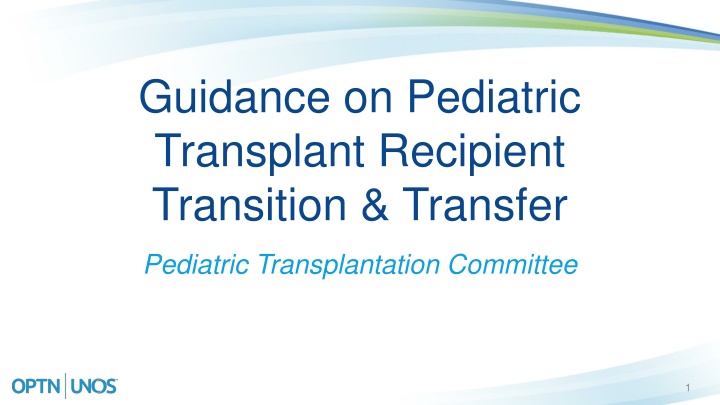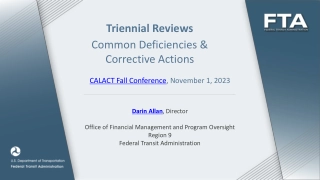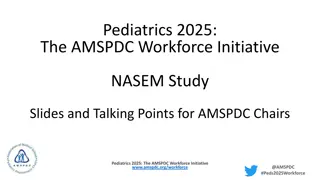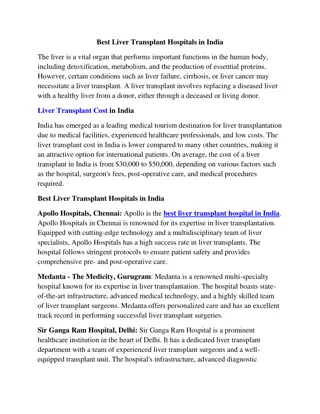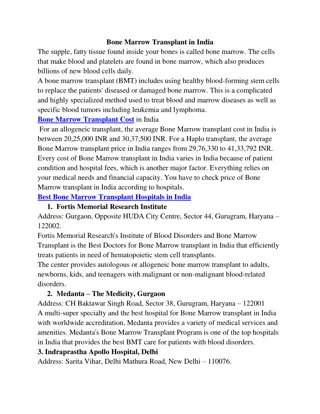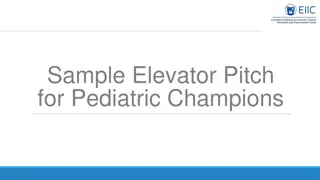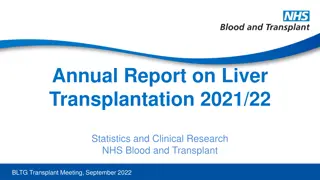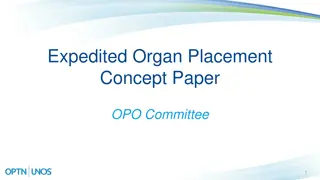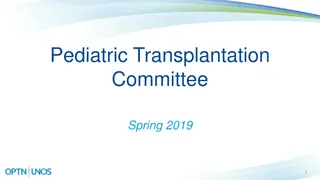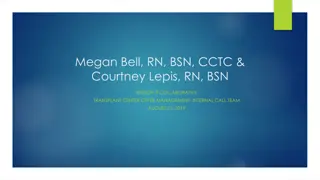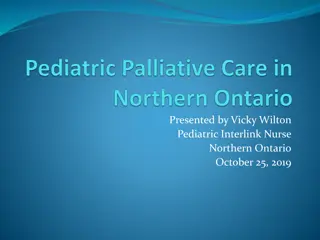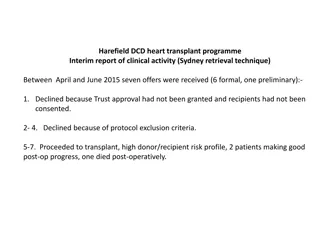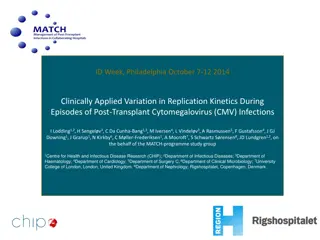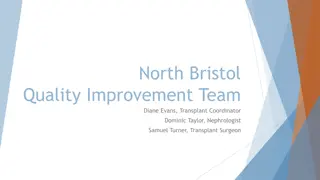Guidance on Pediatric Transplant Recipient Transition & Transfer
Addressing challenges in pediatric transplant recipient transition and transfer to adult care to improve outcomes and reduce lost-to-follow-up rates. Proposed solutions include guidance for pediatric transplant teams, recommendations for recipients' independence, and maintaining communication between pediatric and adult providers.
Uploaded on Feb 15, 2025 | 2 Views
Download Presentation

Please find below an Image/Link to download the presentation.
The content on the website is provided AS IS for your information and personal use only. It may not be sold, licensed, or shared on other websites without obtaining consent from the author.If you encounter any issues during the download, it is possible that the publisher has removed the file from their server.
You are allowed to download the files provided on this website for personal or commercial use, subject to the condition that they are used lawfully. All files are the property of their respective owners.
The content on the website is provided AS IS for your information and personal use only. It may not be sold, licensed, or shared on other websites without obtaining consent from the author.
E N D
Presentation Transcript
Guidance on Pediatric Transplant Recipient Transition & Transfer Pediatric Transplantation Committee 1
What problem will the proposal solve? Suboptimal transition & transfer associated with non- adherence and graft loss Most frequent lost to follow-up in pediatric kidney and liver recipients Impacts the integrity of transplant outcome data 3
Lost to Follow-up Rates at 1 through 10 Years after Transplant for Kidney Transplants Performed during 2000 - 2010 by Age at Transplant 4
Lost to Follow-up at 1 through 10 Years after Transplant for Liver Transplants Performed during 2000 - 2010 by Age at Transplant 5
What are the proposed solutions? Goals: Support improvements in transplant outcomes Improve the transition and transfer process Reduce number of recipients who are lost to follow-up Proposed Solution: Guidance to improve pediatric recipient transition and transfer Recommendations based on survey responses from the transplant community 6
Examples Pediatric transplant team Prepare recipient and family members/guardians Consider transfer to an adult provider within the same institution Encourage and guide recipients independence and self- responsibility Reinforce that recipients must become strong advocates Provide a portable, concise, up-to-date summary of medical/ surgical history and detailed list of medications 7
Examples Accepting adult providers Educate staff regarding childhood and adolescence psychosocial development Seek knowledge about congenital conditions that lead to organ failure in pediatric patients Recipients from pediatric programs may need time to adjust Maintain ongoing communication with the pediatric programs 8
How will members implement this proposal? Resource to enhance: Transplant outcomes Transition and transfer practices Data submission Transplant programs will be the best judge on how to implement 9
Feedback requested 1. In what ways have you seen recipients (transplanted <18 years old) well prepared, or ill prepared, for transfer to adult medical care? 2. Is there specific information about the recipient, or specific transfer practices that have led to an optimal hand-off from a pediatric program to your program? 3. What practices help you share the recipient s health information back to the pediatric transplant program for OPTN data submission? 4. Do you currently use, or have you considered, any non- conventional models of transfer to adult medical care? 10
Questions 11
